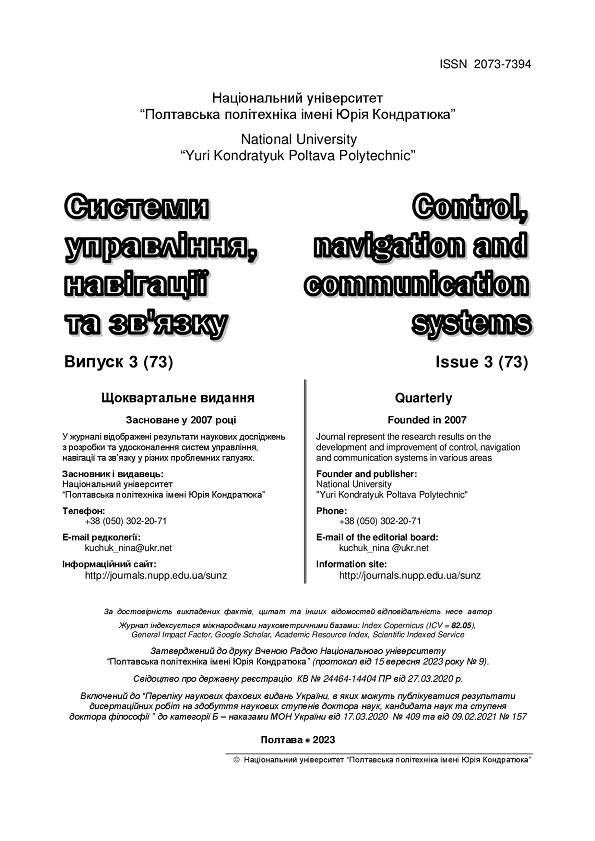A METHOD FOR TESTING A DEEP LEARNING NEURAL NETWORK TO CALCULATE THE TRAJECTORY OF A VESSEL IN VARIOUS NAVIGATION SITUATIONS
DOI:
https://doi.org/10.26906/SUNZ.2023.3.032Keywords:
ship path calculation, accuracy, deep learning neural networks, simulation model, testing, navigation situationsAbstract
The purpose of the article is to develop a method for testing a deep learning neural network for calculating the ship's path to improve the performance of the corresponding numerical model in various navigation situations. Research and development of methods to improve calculation accuracy is of great importance for solving navigation problems. One of the approaches to improving the accuracy of numbers is the use of deep learning neural networks. Deep learning neural networks can model dependencies with high accuracy and have performance advantages over traditional approaches. However, the development and testing of such networks in navigation tasks requires additional research, primarily in terms of considering the specifics of the subject area, rather than well-known approaches to testing deep neural networks in a generalised sense. The presented method of testing a deep learning neural network for calculating the ship's path in various navigation situations is based on the preliminary use of a simulation model of ship motion, which allows simulating various navigation situations. Three classes of navigational situations are obtained that can be observed in real ship operation conditions. The assumptions of the linear theory of sea waves are used to model regular waves. A deep neural network is trained on data obtained from a simulation model and used to predict the ship's trajectory. The accuracy of the neural network is assessed by comparing its predictions with the ship's trajectory obtained from the simulation model. The test results showed that the neural network can accurately predict the ship's trajectory in various navigation situations. The method can be used to evaluate the accuracy of deep learning neural networks for calculating the ship's path in various navigation situations.Downloads
References
Baochun Qiu, Maofa Wang, Houwei Li, Li Ma, Xiuquan Li, Zefei Zhu, Fan Zhou, Development of hybrid neural network and current forecasting model based dead reckoning method for accurate prediction of underwater glider position, Ocean Engineering, Volume 285, Part 2, 2023.
Bartosz Czaplewski, Mariusz Dzwonkowski, A novel approach exploiting properties of convolutional neural networks for vessel movement anomaly detection and classification, ISA Transactions, Volume 119, 2022, Pages 1-16.
Jawhar Ghommam, Lamia Iftekhar, Maarouf Saad, Event-triggered path tracking control with obstacle avoidance for underactuated surface vessel compliant with COLREGs-constraints: Theory and experiments, Mechatronics, Volume 94, 2023.
Gwang-Hyeok Choi, Wonhee Lee, Tae-wan Kim, "Voyage optimization using dynamic programming with initial quadtree based route", Journal of Computational Design and Engineering, vol.10, no.3, pp.1185, 2023.
Hirotada Hashimoto, Yuuki Taniguchi, Michio Fujii, "A Case Study on Operational Measures for Avoiding Parametric Rolling", Contemporary Ideas on Ship Stability, vol.134, pp.307, 2023.
Ageliki Kytariolou, Nikos Themelis, "Ship routing optimisation based on forecasted weather data and considering safety criteria", Journal of Navigation, pp.1, 2023.
Michio Fujii, Hirotada Hashimoto, Yuuki Taniguchi, Eiichi Kobayashi, "Statistical validation of a voyage simulation model for ocean-going ships using satellite AIS data", Journal of Marine Science and Technology, 2019.
Chang, K. Y., Jan, G. E. and Parberry, I. (2003). A method for searching optimal routes with collision avoidance on raster charts. The Journal of Navigation, 56, 371–384.
Gkerekos, C. and Lazakis, I. (2020). A novel, data-driven heuristic framework for vessel weather routing. Ocean Engineering, 197, 106887.
Kobayashi E, Hashimoto H, Taniguchi Y, Yoneda S (2015) Advanced optimized weather routing for an ocean-going vessel. In: Proceedings of the 2015 international association of institutes of navigation world congress, Prague, pp 1–8.




